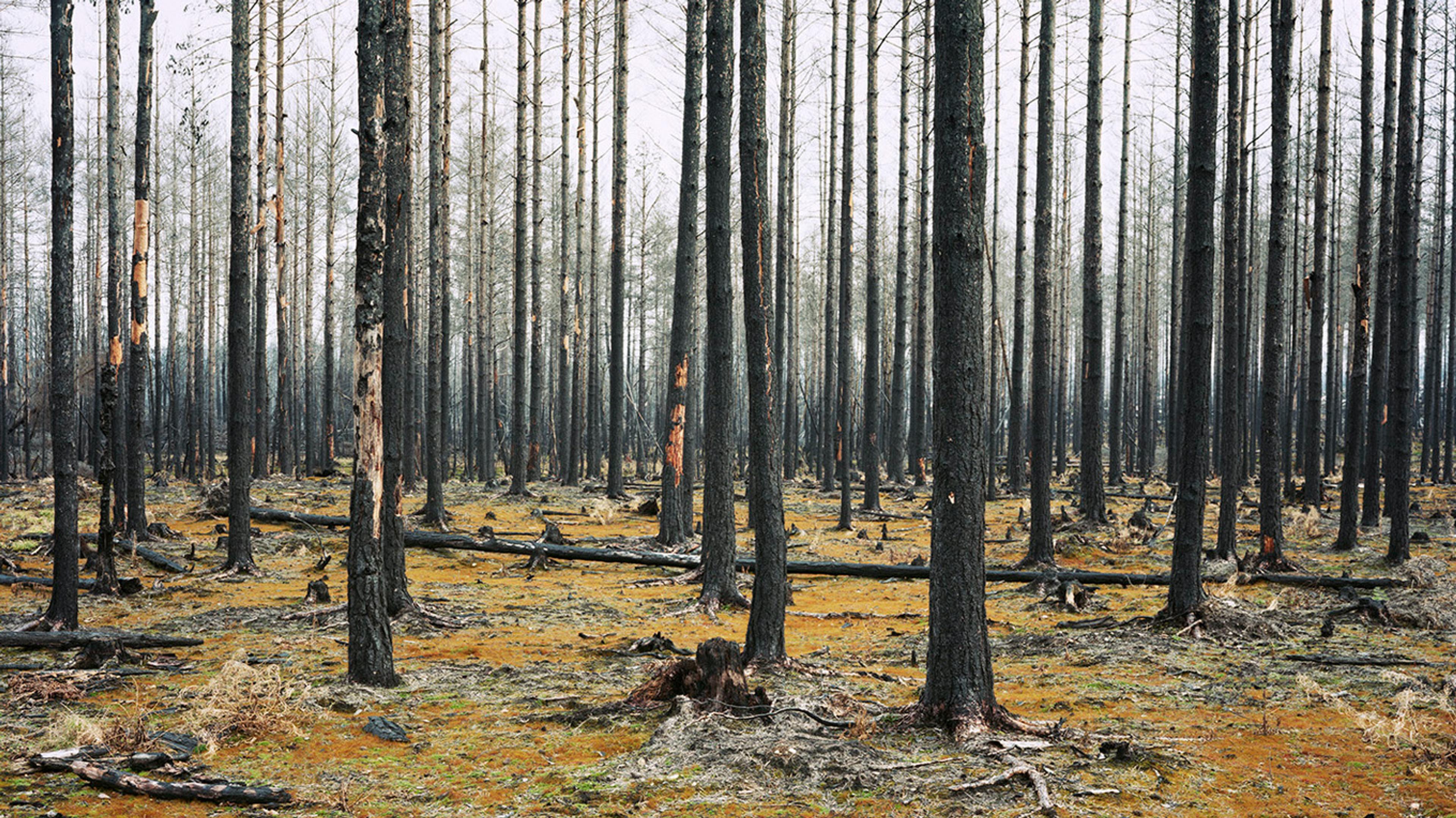Helene Schmitz
Transitions

Fotografiska is proud and pleased to present Helene Schmitz’s new exhibition Transitions, running from 2 September to 13 November. Schmitz, one of Sweden’s most successful art photographers, has developed a unique artistic expression in which the significant features of her artistic practice are always present – a kind of vibrating energy and dynamism, like something lurking beneath the surface – another layer of that which, on the surface, is already frightening.
fascination för att gestalta relationen mellan människa och natur
In Transitions, the forces of nature come up against human beings’ futile attempts of to capture the moment and control time – the hopelessness of the idea that we are the masters of creation, and nature’s merciless reply to this destructive utopia.
”Helene Schmitz is a Swedish photographer who has enjoyed much success both in Sweden and internationally and her work is sought-after in Europe as well as in Japan and the United States. She is fascinated by the inevitable. Life against death. Man against nature. How we believe we are in charge of our destiny, only to inescapably fall victim to nature’s violent reaction to this delusion. Schmitz’s portrayal of this state of affairs is of the utmost relevance,” Pauline Benthede, Exhibition Manager at Fotografiska, explains.
Many people collect her work and this is a fact that tells us something significant about our time: her fascinating depictions of our relationship to nature touch on forces that we, in our neatly organised societies, are not interested in acknowledging. Dark forces that impose on us, creating uncontrollable gaps that mock our culture’s vain attempts to capture time and create order, we, the descendants of Carl Linnaeus. Here we see our desire to freeze the moment reflected, our vain attempts to bring creation under our command – and nature’s relentless and categorical response to our dream of controlling that which cannot be controlled, while we refuse to conform to the natural system that for millions of years has pulsated with life.
““I see photography as a way of dealing with time and transience – which is a fundamental theme in my images...”
What is it that bubbles and splutters beneath the surface?
Schmitz has a very special eye for our often violent relationship to nature, which she captures and dramatises in her photography. The astonishing and thought-provoking degradation process of an abandoned site finds its most fragile and beautiful expression in her series Earthworks and invasive clinging plants appear exquisitely eerie and poetic in her Kudzu Project.
Many may remember her series Livingrooms, comprising images from her burnt-down childhood home on Strandvägen in Stockholm. The art form of photography has rarely been so disquieting.
What is it that bubbles and splutters beneath the surface? What is so forcefully evoked by the photograph – celebrating the fact that something beneath the surface has to be broken down to allow something else to emerge. Catharsis.
Fire is also a central feature of her new series The Forest, in which Schmitz explores an environment, which, in the summer of 2014, was drastically and dramatically engulfed by nature. The vast forest fire in Västmanland was the most devastating in recent Swedish history. More than 1,200 people and 1,700 livestock were evacuated and one person was killed by the flames. It all started in a clear-felled area, a concept as invasive as anything in Kudzu. Here, among the ashes, life is beginning to sprout again as species that require the heat of a forest fire for the seed to take root return. Nature is prepared for disasters; the spruces with their tall crowns and tough bark are still standing because their constitution can withstand extreme heat. There they stand, on parade, stubbornly and persistently exclaiming that it is a cyclic process – against which we are powerless…
THE SERIES
The Kudzu Project
In this series, Schmitz depicts one of the most invasive and aggressive plants that was introduced into the United States in 1876, ironically as a well-intended gift from Japan to the United States on occasion of the country’s 100th anniversary. The kudzu was initially admired for its fantastic vitality and fecundity. However, admiration quickly turned into horrifying consternation as the plant rapidly spread across the southeast of the United States. Like a terrorist wildfire the plant is capable of spreading at a rate of 30 cm in 24 hours; there are even rumours that you have to close your windows to stop it entering your house and suffocating everything in its way. The total weight of a plant can crush both cars and buildings and its entire existence is a very real threat to the fragile balance of the eco system.
Earthworks
The series Earthworks has colonial overtones. Here, nature has reclaimed an abandoned diamond mine in Namibia. The sand and the Atlantic winds are slowly eroding buildings and spaces, pulverising them and erasing everything related to human civilisation.
The Forest
This new series presents photographs from the forest of Västmanland, near Sala, which, in the summer of 2014, was the scene of the worst forest fire in recent Swedish history. One person perished in the flames and many people and animals were evacuated. Almost 14,000 hectares of woodland was destroyed. The fire started in a clear-felled area, one of the most destructive human concepts, involving destroying irreplaceable natural areas for generations to come. During the two years since the fire, Helene Schmitz has returned to the forests in Västmanland to document the transformation of the landscape.
Here we can witness a state in which one phase dissolves into another in the constant passages of that which we call time. Here we can witness Transitions.
A film where Helene talks about her work as a photographer is also screened in the exhibition.